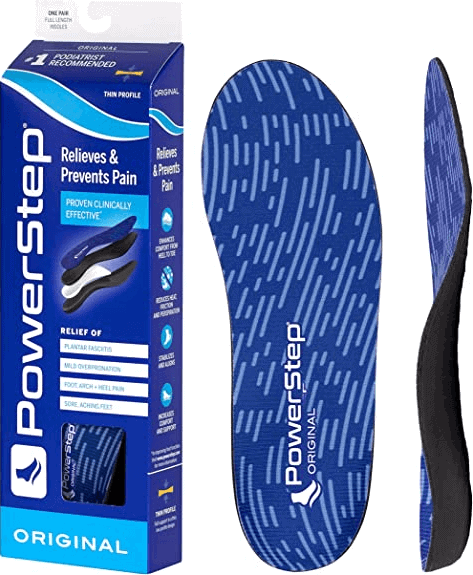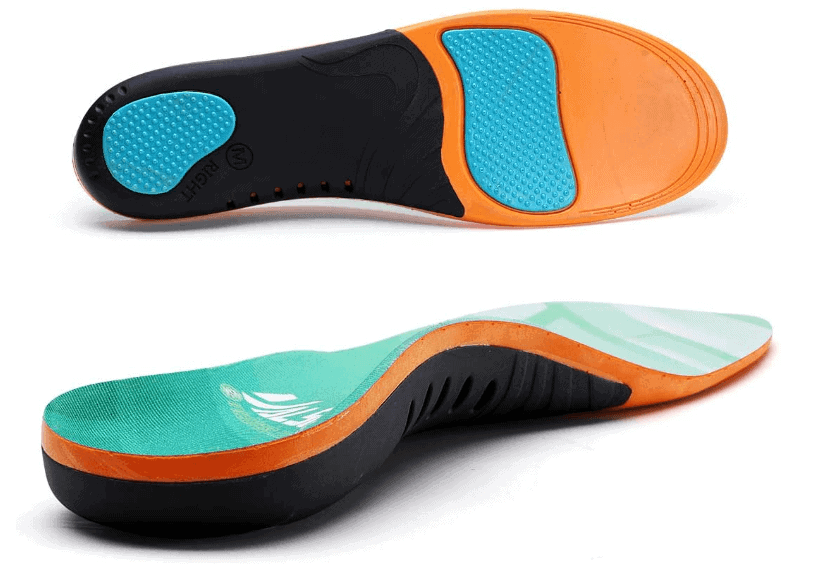Bunion Exercises
Read More >
James McCormack is a Physical Therapist who specialises in knee, foot & ankle injuries. www.james-mccormack.com is a participant in the Amazon Services LLC Associates Program, an affiliate advertising program designed to provide a means for sites to earn advertising fees by advertising and linking to Amazon.com. The money earned from this helps us to create free educational content.
Bunions are associated with a deviation in the position of the big toe that can be painful when walking and weight-bearing by lifting the big toe up and down. There is a genetic link for the development of bunions, so taking early action to prevent bunion formation is recommended. Using orthotics is one of the most effective steps for reducing the risk of bunion deterioration and prevention.
There are several orthotics for bunions, ranging from shoe inserts, off-the-shelf insoles, and orthotics to custom-made orthotics. In the initial instance, we recommend trying off-the-shelf orthotics and if you find them uncomfortable, think about consulting a foot specialist for biomechanical analysis.
Orthotics are an effective form of pain relief for bunions and slow down the speed of change within the MTP joint of the big toe. Unfortunately, orthotics cannot reverse any changes that have already occurred within the big toe joint.
For orthotics to work optimally, they should be placed in a neutral shoe.
The best orthotics for bunions have a deep heel cup with a semi-rigid midsole, moderate medial arch height and forefoot cushioning. The deep heel cup helps to control the subtalar joint of the ankle, while the semi-rigid sole allows for some shock absorption without collapsing under bodyweight. The moderate arch height, coupled with the deep heel cup, helps control pronation moments while cushioning in the forefoot protects the bunion from impact.
We have provided a list of our most recommended orthotics for bunions below.

We recommend the Powerstep insoles for bunions if you want an orthotic that fits into low-profile shoes and work shoes.
They are a very thin insole with a semi-rigid midsole to assist with pronation control, and their Eva base is a lightweight but robust material that can tolerate walking and standing.
We recommend the Powerstep insoles for mild bunions and for those who want an alternative orthotic that fits in most shoes.
Buy Now
We recommend the Valsole orthotics for bunions if you are experiencing mild to moderate symptoms.
The Valsole has a cushioned heel cup for extra comfort, while its reinforced arch support helps control the foot’s pronation moments. It has extra gel cushioning on the forefoot, which protects from impact when walking.
The Valsole orthotics work well inside a casual trainer but can lack the support required for running pain relief.
Buy on Amazon

The WalkHero orthotics for bunions is a robust orthotic that can tolerate most forms of activity. It is slightly larger than the other recommended orthotics but works well inside a running trainer.
The WalkHero Orthotics has a deep heel cup with silicon cushioning to protect the heel while providing support, a 7mm reinforced medial arch for pronation control and a 5mm top cover for comfort.
The sole is made of EVA to provide stability and control when running, helping to protect a bunion as much as possible.
We recommend the WalkHero orthotic for Bunions for running and all severity of bunion pain.
Buy NowThis is not medical advice. We recommend a consultation with a medical professional such as James McCormack. He offers Online Physiotherapy Appointments for £125.
Related Article: Best Bunion Socks